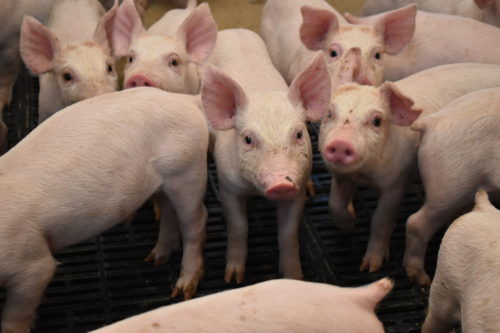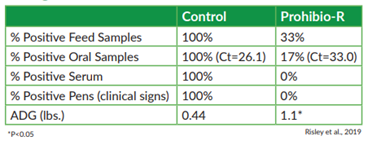Biosecurity – Keep Your Swine Herd Healthy and Productive
Posted: February 16, 2022 | Written By: Mark Whitney, Ph.D., Form-A-Feed Nutrition and Production Specialist

Hog futures prices have been hitting over $100/cwt, meaning every pig on your farm is very valuable. In addition, grain and feed prices are high, so input costs for each pig are also considerable. Health is always important and key in running a productive and profitable operation, but never has it been more apparent than now. Cold weather means potential herd outbreaks of PRRS (Porcine Reproductive and Respiratory Syndrome) and PEDv (Porcine Epidemic Diarrhea Virus), and E. coli issues have also been very prevalent this past year. In order to minimize risk of bringing in disease from outside the farm, develop a biosecurity plan and review/update it regularly with input from the herd veterinarian. Include background herd health status, vaccination strategies, and treatment guidelines.
A biosecurity plan should include guidelines for persons working on the farm as well as visitors. These should include:
- Use of farm and/or barn specific clothing and boots/footwear.
- Wash hands frequently when working with pigs.
- Ideally, a shower-in facility is available and used, especially when entering the most vulnerable animal areas (i.e. farrowing facility).
- When doing chores, move from the healthiest to least healthy (most often youngest to oldest) pigs.
- Save working and/or treating sick animals to last within the same age group/barn.
- Minimize the number of visitors, and provide a sign-in log recording the last time people have had contact with pigs. A minimum of 24 hrs and preferably 3 days away from direct contact with other pigs should be observed.
- International visitors from areas known to have active disease outbreaks (i.e. China/Asia, Eastern Europe, Dominican Republic) should have a minimum 14-d downtime prior to being on the farm, and direct animal contact avoided if possible.
Facilities and Equipment can also be responsible for carrying or harboring disease.
- Clean and disinfect facilities and equipment, especially between batches.
- Clean/disinfect equipment and vehicles prior to arriving on the farm, especially tires and undercarriage.
- Designate employee parking areas and provide traffic routes for pig movement, feed delivery, manure hauling, mortality disposals, etc. to minimize exposure of animals to potential biosecurity risks.
Feed and feed ingredients have also been identified as potential sources of disease pathogen transport, most notably PRRS, PEDv, and ASF (African Swine Fever). Current strategies to minimize risk of introduction and infection via feed include:
- Holding time(s), especially for imported feed ingredients.
- Use of heat (pelleting, extrusion, etc.) to destroy pathogens at time of feed production.
- Identification/monitoring of potential contamination risk points at the feed mill level.
- Mitigation via via feed additives that destroy or inactivate potential pathogens on contact.
Feed mitigant products that contain formaldehyde have been shown to be highly effective at destroying feed pathogens, but also provide handling safety risks and concerns. Use of medium-chain fatty acids (MCFAs) and monoglycerides (MCMGs) have been shown to be alternatives that are natural and highly safe.
Prohibio-R is a nutritional support product from Form-A-Feed that utilizes MCFA/MCMG technology to address challenges that impact pig gut health. The natural compounds in Prohibio-R have been shown to significantly reduce the risk of pathogen infection via feed while also minimizing pathogen impact in the gut and supporting immune function. Pig and in-vitro research has demonstrated strong antimicrobial properties, especially against enveloped viruses (i.e. PRRSv, PEDv, ASF) and gram-positive and gram-negative bacteria (Staph, Strep, E. coli, etc.).
When provided in the diet, Prohibio-R can be another key part of a herd’s biosecurity plan, minimizing the risk of pathogen introduction to the herd via livestock feed, while supporting the overall health plan for the operation. PRRSv and PEDv outbreaks have and continue to occur and result in significant economic losses to swine producers. To learn more about this exciting technology and product, contact your Form-A-Feed Nutrition and Production Specialist.
